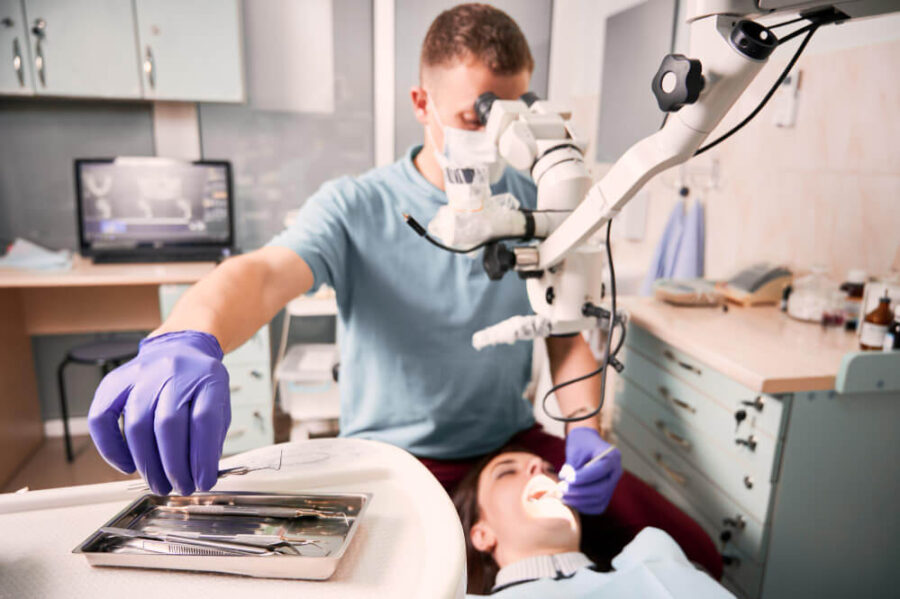Table Of Contents
- 1 Peri-implantitis in a nutshell
- 2 Warning signs patients often overlook
- 3 Why routine hygiene visits matter more than ever
- 4 The dollars and sense of prevention
- 5 A quick self-check between appointments
- 6 At-home routines that support professional care
- 7 Choosing the right clinic for maintenance
- 8 The bigger cases demand even closer oversight
- 9 Frequently Asked Questions:
- 9.1 1. How often should I schedule professional maintenance after receiving dental implants?
- 9.2 2. What early signs of peri-implantitis can I notice at home?
- 9.3 3. Can peri-implantitis be treated without removing the implant?
- 9.4 4. Why do smokers and diabetics need shorter maintenance intervals for their implants?
- 9.5 5. How do maintenance costs compare with revision surgery for failed implants?
Dental implants have earned a reputation as the go-to option for replacing missing teeth, and the demand for Dental implants Melbourne continues to grow. Yet these titanium fixtures are only as reliable as the tissue that supports them. Peri-implantitis, a bacterial infection that triggers bone loss around an implant, can quietly undermine even the most precisely placed fixture and leave patients facing revision surgery that dwarfs the original outlay. Early hygiene reviews remain the most effective and least invasive strategy for keeping treatment on track and wallets intact.
Peri-implantitis in a nutshell
Peri-implantitis develops after peri-implant mucositis (gum inflammation without bone loss) progresses into a deeper infection that erodes supporting bone. A recent survey of Australian periodontists estimates peri-implant mucositis affects nearly half of implant patients, while peri-implantitis strikes about one in five individuals. Those figures underline a simple reality: infection around implants is common, not an outlier, and waiting for obvious discomfort before seeking care is a costly gamble.
Warning signs patients often overlook
Inflammation around an implant rarely causes sharp pain in the early phase. Instead, tell-tale signs tend to be subtle:
- Bleeding on gentle brushing or probing
- Puffiness, redness or a shiny look to the gum cuff
- A metallic or “bad taste” near the crown
- Slight tenderness when chewing
- Early radiographic bone shadows spotted by the dentist
None of these symptoms will stop a person from enjoying dinner, so they’re easily ignored. However, once bone loss gathers pace the implant’s long-term stability is threatened and remedial treatment options narrow.

Why routine hygiene visits matter more than ever
Professional recall doesn’t end when the crown is fitted. Current clinical guidance stresses that implant probing should be part of every maintenance appointment. Biofilm collects most aggressively where the implant meets the crown; a hygienist uses specialty scalers, air-polishing devices and dedicated floss or interdental brushes to disturb that film before it matures into a destructive ecosystem. For many healthy non-smokers, a six-month recall is adequate. Patients who smoke, live with diabetes or have a history of gum disease often require three-monthly reviews.
The dollars and sense of prevention
A ten-year clinical trial from Switzerland calculated that routine maintenance averaged just nine per cent of the original implant bill over a decade. That modest figure contrasts sharply with the expense of surgical debridement, bone regeneration materials and potential implant replacement once peri-implantitis takes hold—procedures that can easily multiply the original fee. Separately, researchers have shown that patients who skip supportive therapy face a significantly higher risk of infection, with peri-implantitis prevalence exceeding 30 per cent in some cohorts. In short, a regular polish and probe is the cheapest “insurance policy” an implant owner can buy.
A quick self-check between appointments
How can someone spot trouble before their calendar reminder pings? Run the tip of a dry finger along the gumline: it should feel firm, not spongy. Look for any gum that appears darker or bleeds after flossing. If bleeding persists for more than a day, book an early review. Treat that ooze as seriously as a bleeding cut on your hand—both signal tissue damage and bacterial invasion.
At-home routines that support professional care
Daily care remains straightforward. Use a soft, compact-head manual or electric brush, low-abrasive toothpaste and small interdental brushes sized for the implant embrasure. An alcohol-free antimicrobial rinse can help after large meals. Smokers should understand that quitting is the single biggest step to protect their investment. People comparing dental implants near me or researching dental implants near me prices often focus on the surgical phase; yet the long-term expense hinges on consistent maintenance, not just the initial placement.

Choosing the right clinic for maintenance
An effective implant practice provides structured recall, baseline radiographs, and open communication. If you are comparing teeth implants cost Melbourne, ask how hygiene is managed after placement and whether recall fees are capped or bundled. Patients scanning ads for dental implants near me affordable options should look past the headline price and check that a qualified hygienist and calibrated probing protocols are part of the package. Long-term value outstrips short-term savings every time.
The bigger cases demand even closer oversight
Full-arch reconstructions present more surface area for plaque retention and require meticulous home care plus professional oversight. Anyone considering full mouth dental implants Melbourne should plan follow-up visits as diligently as they plan the surgery itself. A simple calendar reminder on a phone can mean the difference between a minor clean and a complex graft years down the track.
Early-stage peri-implantitis is reversible, late-stage often is not. Regular hygiene visits catch the quiet warning signs, preserve bone and protect the substantial investment patients make in implant dentistry. Booking that maintenance appointment today is the most reliable way to avoid an unwelcome and expensive surprise tomorrow.
Frequently Asked Questions:
1. How often should I schedule professional maintenance after receiving dental implants?
For most healthy, non-smoking patients with gums, a hygiene visit every six months is sufficient to remove plaque, check tissue attachment, and verify bone levels. If you smoke, have diabetes, or previously battled periodontal disease, three-monthly reviews are safer because infection risk escalates. Regular care lets your clinician detect early mucositis before it progresses to peri-implantitis, protecting the fixture and saving you revision costs.
2. What early signs of peri-implantitis can I notice at home?
Painless gum bleeding while brushing is the first alarm. Next come slight puffiness, shiny redness around the crown margin, or a lingering metallic taste. Pressing the gum should feel firm; softness hints at swelling. Light discomfort on biting or flossing may appear. If any bleeding or tenderness lasts longer than a day, arrange a check-up so your clinician can halt infection before bone damage develops.
3. Can peri-implantitis be treated without removing the implant?
Yes, provided bone loss is caught early. Your dentist will clean the implant surface using ultrasonic air-abrasion, then disinfect with antimicrobial gel or laser energy. A site-specific antibiotic may be packed under the gum. When bone has receded, dentists graft material to restore support. Smoking cessation and meticulous home care are essential for success. If infection continues to advance despite therapy, implant removal remains the last resort.
4. Why do smokers and diabetics need shorter maintenance intervals for their implants?
Smoking and uncontrolled diabetes hamper blood flow and immune defences, letting bacteria flourish around implants. Biofilm matures faster, driving inflammation and bone loss. Studies show smokers lose roughly twice the bone of non-smokers; diabetics with high HbA1c face infection rates several times higher. Three-monthly hygiene visits disrupt plaque, reveal tissue changes, and enable prompt treatment, averting grafts or implant loss and costly repairs.
5. How do maintenance costs compare with revision surgery for failed implants?
Routine hygiene visits and periodic X-rays across ten years typically cost a fraction of the initial implant fee. Repairing peri-implantitis often involves flap surgery, detoxification, bone grafts and replacement parts, expenses that quickly match or surpass the original outlay. Add recovery time and lost wages and the gap widens. In financial terms, preventive care remains the smartest spend, preserving both bone and long-term budget.

